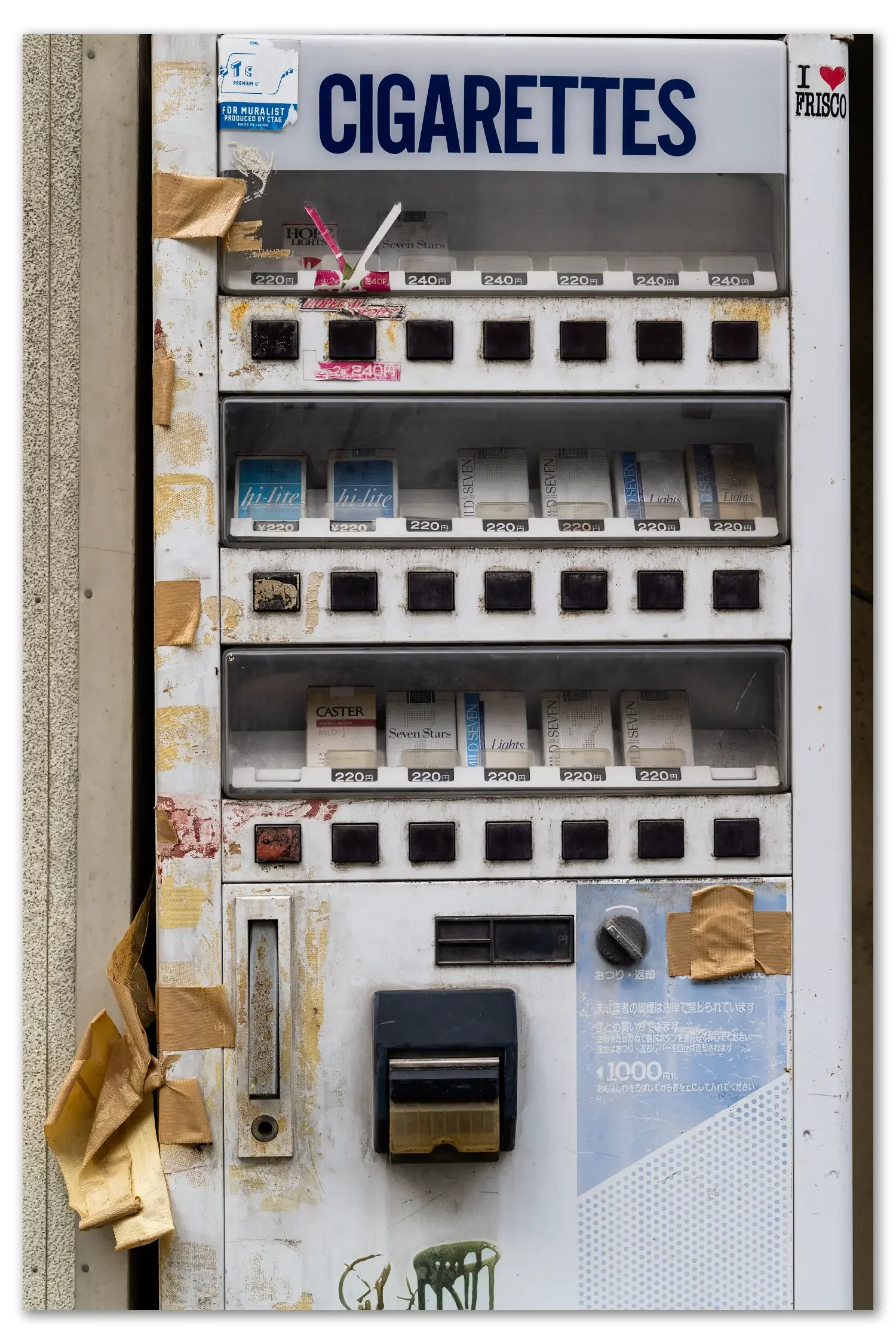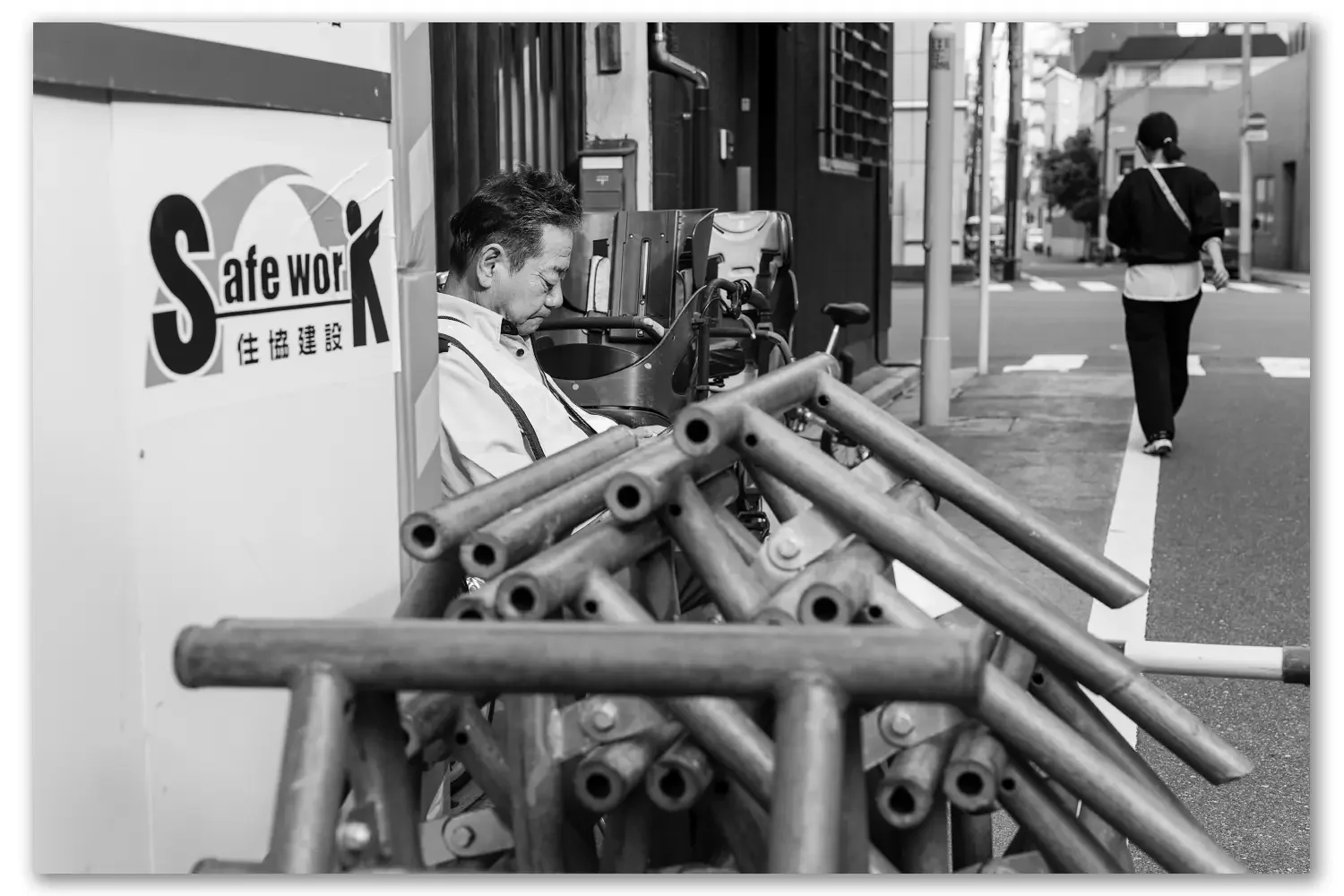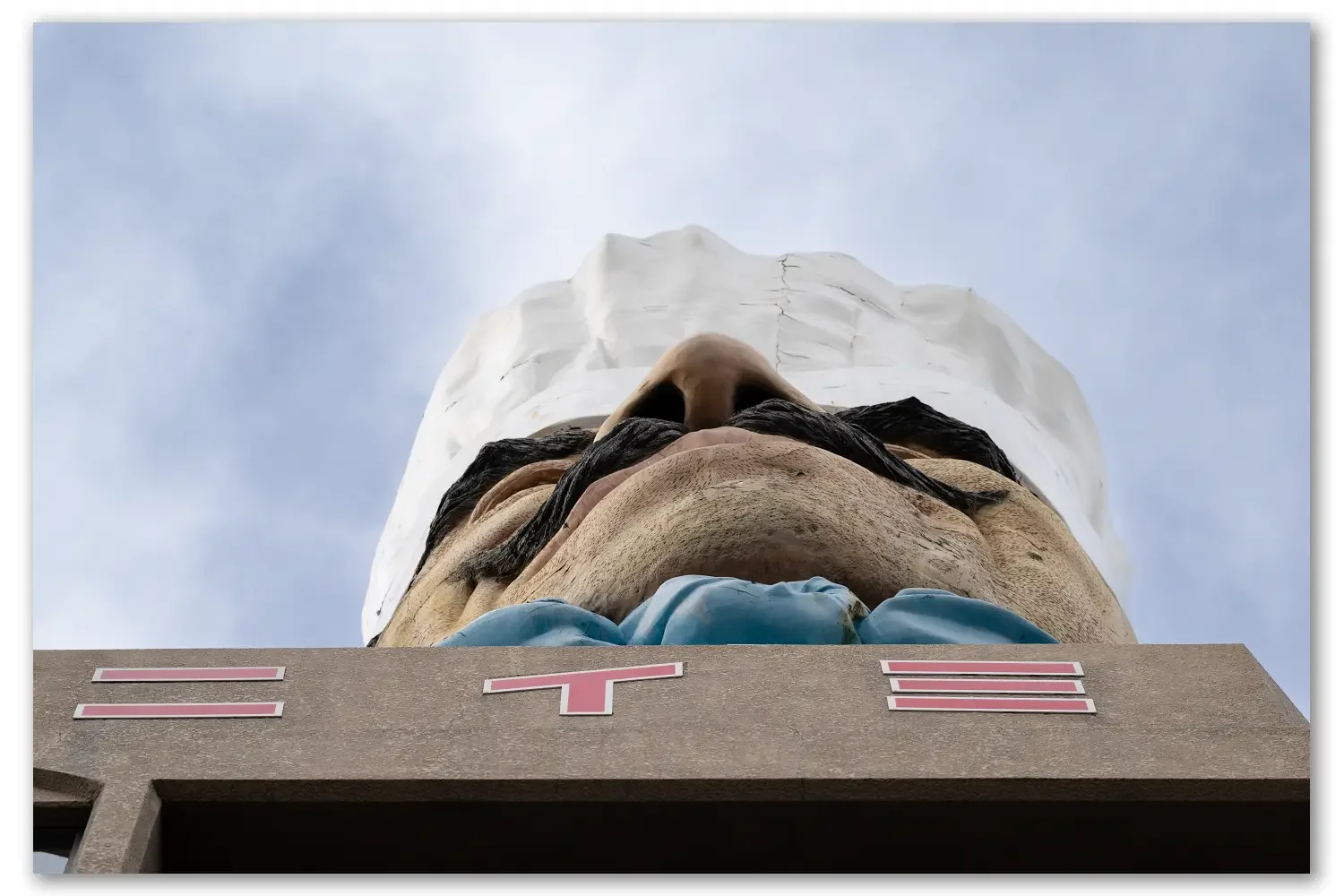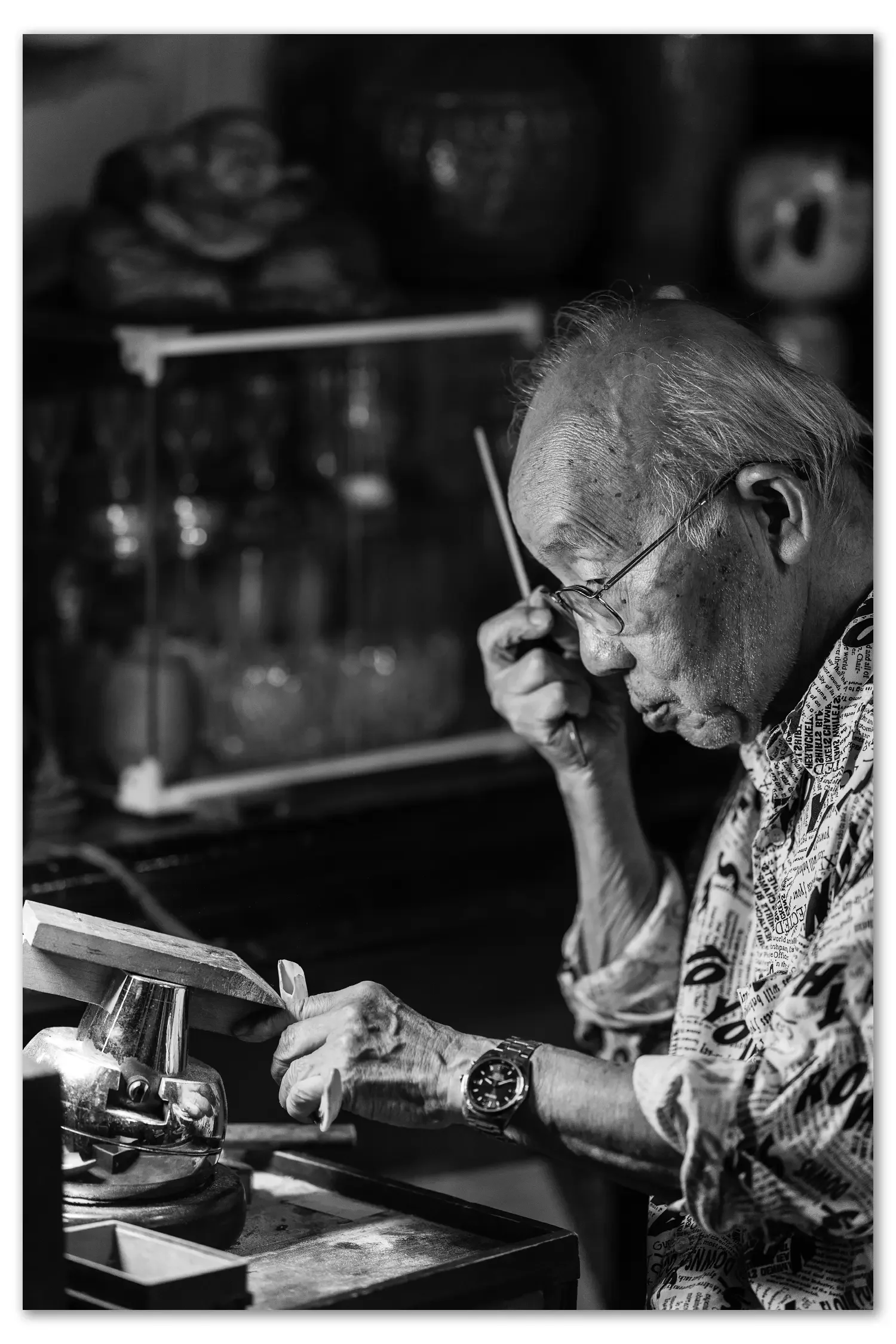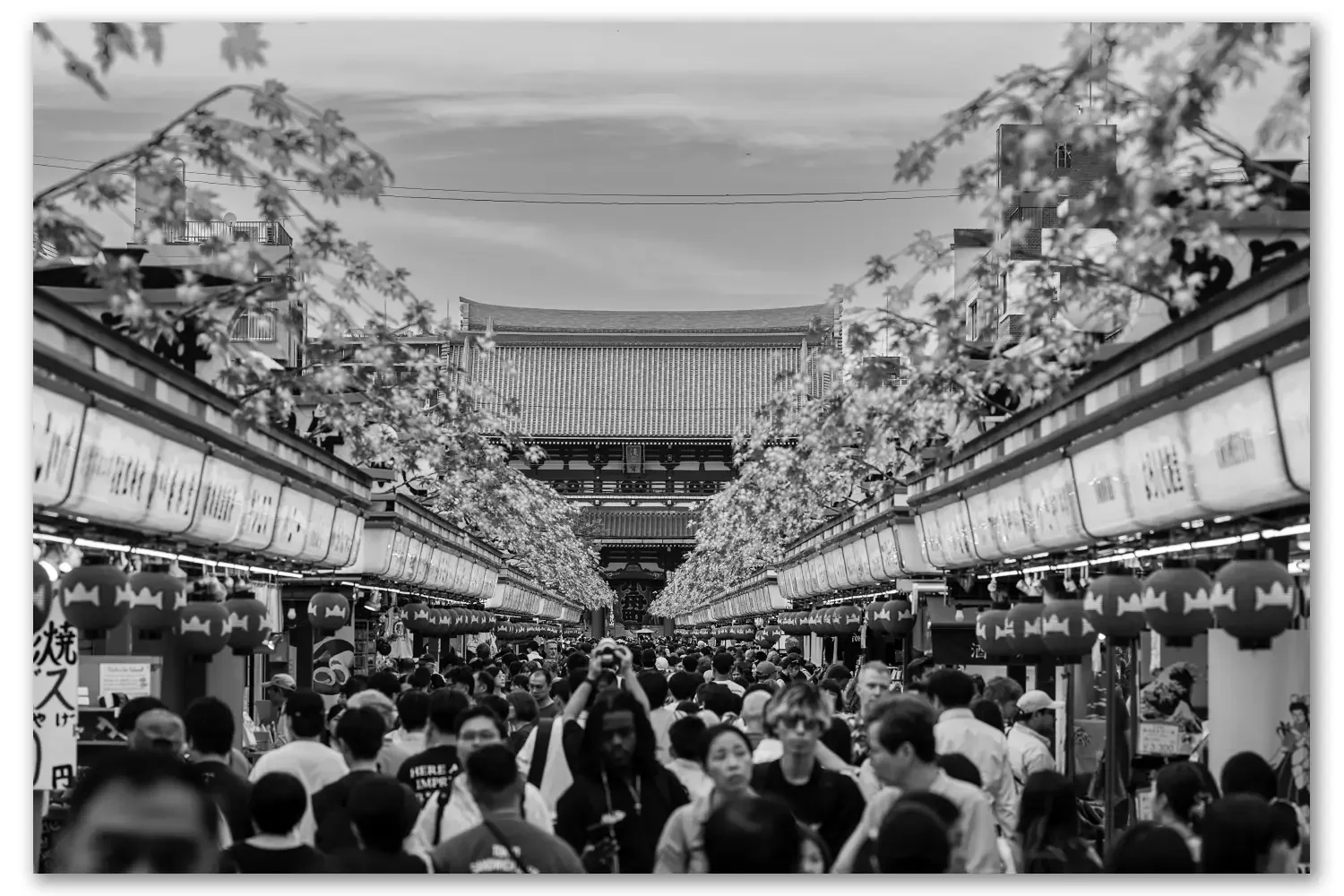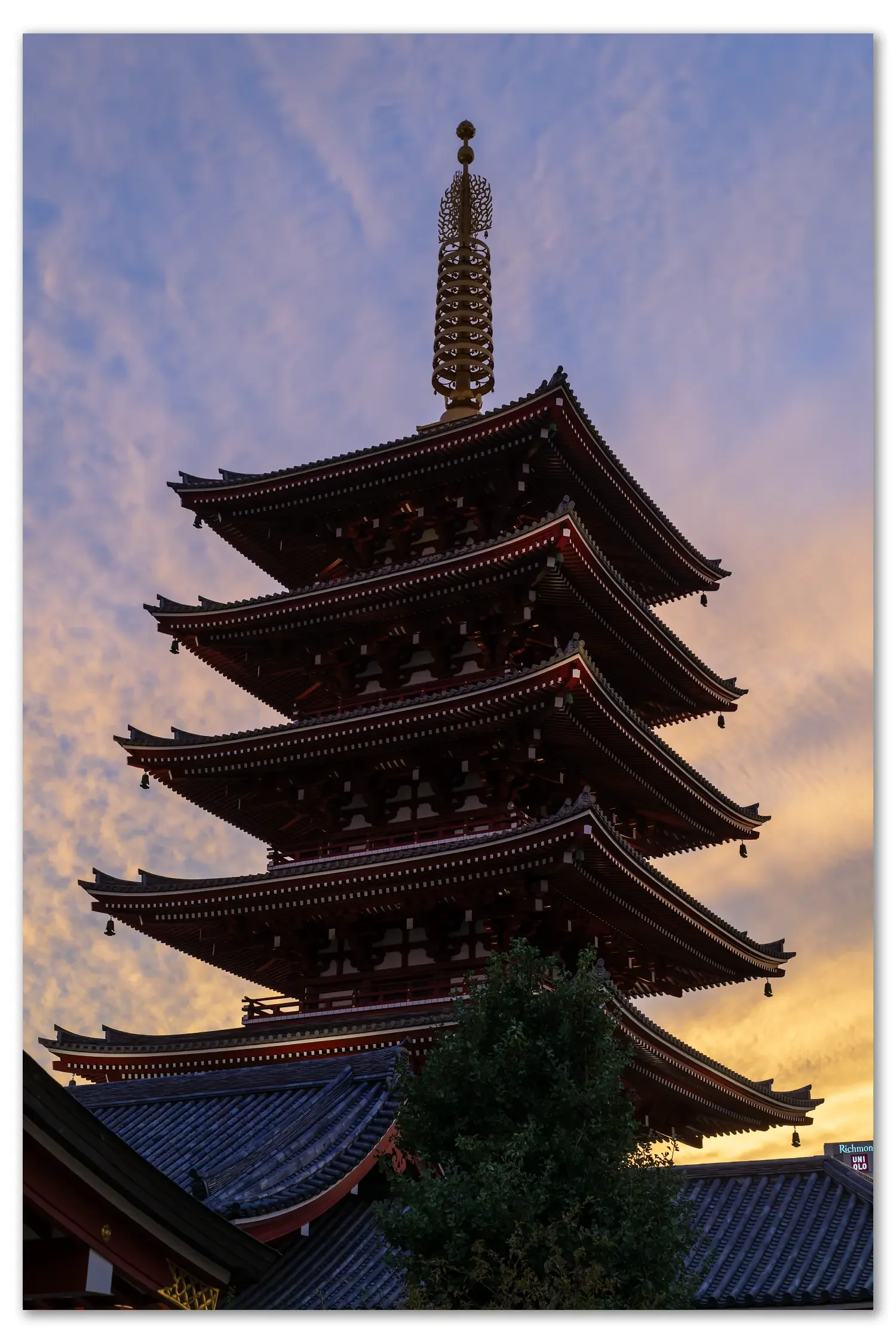Why Asakusa Is a Must for Street Photographers
Asakusa For Street Photography
The Asakusa area, including Sensoji Temple, are one of Tokyo’s best areas for street photography. Although the main shopping avenue of Sensoji is often crowded with tourists, the outlying avenues and alleys are full of opportunity. Travelling further afield to Kappabashi provides a great day out shooting.
All too often, the locations that draw a great deal of tourists can be considered poison by some. My thinking is that the best street photography has a person as the subject. What is the difference if they are locals or tourists? A great photo is a great photo.
If the goal is to focus on the culture or history of the location, find out where and when the locals are present and shoot there. Otherwise, dive into the experience and let it take you where it leads. If it's an experience you have had, pursue the image in your heart/mind, and forget about the tourists.
Diving into Asakusa, despite the crowds, will be rewarding, to say the least. There is an energy there that overwhelms the touristy cringe we all try to avoid. This energy requires effort to be felt. I do this by observing the crowd’s pace, not participating in it. Getting swept up by all the people, sights, and sounds is easy and fun. This leads to resentment of the location and poor images. Step back and let all that slide right on past, and it will open the senses to what this place can be.
Remember the rich history of Asakusa. Some locations require us to look past their present.
Asakusa History
Asakusa is one of Tokyo’s oldest neighbourhoods, flourishing as a vital entertainment and religious center since the Edo period (1603–1868). Located near the Sumida River, Asakusa was long known for its bustling streets, theatres, and the vibrant Edo-era atmosphere that persists to this day. The area’s historical significance is rooted in its role as a crossroads for merchants, artists, and locals, making it a vibrant hub for culture, commerce, and traditional festivals, such as Sanja Matsuri.
At the heart of Asakusa stands Sensoji Temple, Tokyo’s oldest and most famous Buddhist temple. According to legend, Sensoji was founded in 628 AD, after two brothers, fishermen, pulled a statue of the Bodhisattva Kannon from the Sumida River. The temple has been rebuilt several times due to fires and World War II air raids, but it remains a symbol of Tokyo’s resilience. Sensoji draws millions of visitors every year, who come to pray, enjoy its historic architecture, and explore the iconic Kaminarimon (Thunder Gate) and Nakamise shopping street.
Kappabashi, located just west of Asakusa, is celebrated as Tokyo’s “Kitchen Town.” Established in the early 20th century, this shopping street caters to restaurant owners and chefs, with shops selling a wide range of items, from kitchenware to plastic food models. The area’s name comes from the folklore creature “kappa” and the bridge (“bashi”) that once spanned the nearby river. Over the decades, Kappabashi has become a vital destination for culinary professionals as well as tourists seeking unique souvenirs and a glimpse into Tokyo’s vibrant food culture.
Where to Shoot in Asakusa
If you have never been, I would start with Sensoji Temple. Be a tourist for a few minutes and walk the main street, visit some food stalls, walk through the Thunder Gate and pray at the Buddhist Temple if you like. Enjoy the moment, it will never come again. After, explore the side streets and the covered shopping arcade on either side of the temple's main avenue. The further you venture from the temple, the less touristy it becomes.
On the other hand, if you have seen the temple before and want a different experience, try walking into Sensoji via Kappabashi. On the Ginza Line, get off at the Tawaramachi Station and follow the signs to Kappabashi, a few short blocks away. Thoroughly explore Kappabashi, also very busy, but in a different way than Sensoji. At any point, turn right and walk through an older neighbourhood of Tokyo. Complete with small parks, temples, shrines, locals and shops. The further you walk down Kappabashi Street, the closer to the temple you will be when arriving at Sensoji.
The biggest challenge is walking from Ueno Station and following the side streets up to Kappabashi. From here, follow Kappabashi Street as far as you like, turning right to walk into Sensoji Temple. This is my preferred route. I take a different path each time.
As always, I would love to hear your story in the comments below. If you feel so inclined, share a coffee with me. I am a flat white kind of guy. Happy shooting, everyone.
To book a tour my photo workshop/photo tour website, or email directly jeff@tokyoforgeries.com
